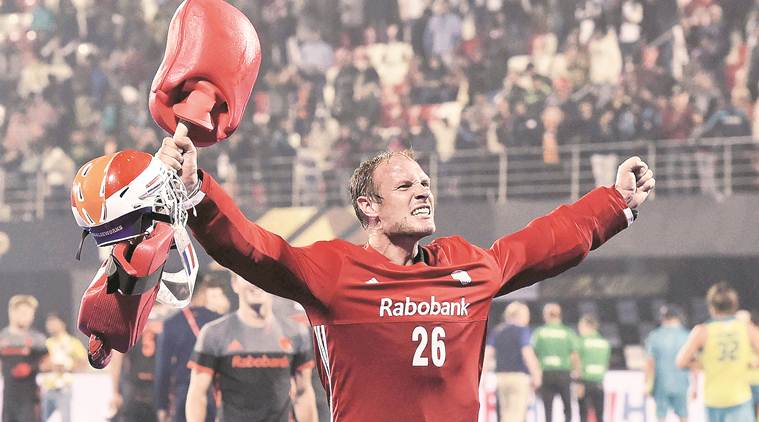
For decades, Belgium aped everything the Netherlands did on the hockey field. But on Sunday, when the two teams meet in the World Cup final, the Dutch will try to play like their ‘little brothers’. Around three years ago, hockey was in a state of tactical lull. The same teams played the same tournaments, adopted similar styles and in the end, Australia usually won. But then, Belgium chose to be the disruptors – out of desperation as much as design.
The unprecedented investment in youth development since the turn of the century had lifted Belgium out of obscurity and turned them into, as they say in football parlance, a mid-table side. One can even safely point out the result that changed the perception about them in hockey circles – the 4-3 comeback win over India in the final of the 2011 Champions Challenge in Johannesburg. Since then, they’ve rarely lost to India and have been a constant thorn in the side for the world’s best.
But when it came to mounting a final assault on the podium, making that final push, the Red Lions were constantly stumbling. At London 2012, Belgium looked set for a semifinal berth but eventually finished fifth. The scenario repeated two years later at the World Cup in The Hague, where they missed out on a last-four spot by just one point and had to again settle for fifth place. Their golden generation, it seemed, wasn’t destined for gold.
In Belgium, they were scratching their heads. They had some of the best youth players (consecutive junior European Championships were a testimony to that), hired the best coaches, had a competitive domestic league, and a development model that had grown over a 15-year period to become the envy of the hockey world. “So in 2015, we thought of making a tactical switch,” Belgium coach Shane McLeod says.
The 2015 World League Finals in Raipur was McLeod’s first major tournament as Belgium’s trainer. Being a relatively inconsequential tournament in a pre-Olympic year, he and his team had nothing to lose. “So they played in a way that encouraged the opposition to keep the ball in pockets of space in the midfield,” says Simon Orchard, one of Australia’s mainstays in that tournament. “Once the ball is there, they pressed as one cohesive unit to try to dispossess you and launch a counterattack. It was a different way of approaching… and surprised a lot of us.”
Suddenly, teams weren’t able to trespass into Belgium’s zones. This was a phase in hockey when aggressive, man-to-man marking had seeped deep into defensive structures of the teams. Australia, Germany and even Spain had been extremely successful by employing this style, so almost every side tried to copy them. “And all of a sudden, you had a team that played zone so you didn’t know how to defend that,” England coach Danny Kerry says.
Like most things new, the first reaction to Belgium’s tactical switch was scepticism. “Everyone said it’s not going to work,” says defender Arthur van Doren, who completed 150 international appearances on Saturday.
But the players trusted McLeod’s instincts. And it helped that a bunch of them had virtually grown up together – Tom Boon and Simon Gougnard, for instance, have been playing with each other since their pre-teens. That they were all teammates since the time they were 5-6 years old gave them a unique sense of match IQ. And the continuity helped them forge strong understanding and trust, the two factors key while using zonal press, because players essentially have to hope their teammate will ‘take care’ of their area on the pitch.
The fact that they won their first major medal – Belgium won silver in Raipur – gave them the confidence to use this system going forward. By the time the Rio Olympics came six months later, Argentina – who were one of the early victims of Belgium’s new tactics – too had adopted zonal press. “The two teams that were in the Olympic final played zonal,” Van Doren says. “I think a lot of teams took elements of how we look at the game and implemented it in their own tactics. We showed them how to play.”
The number of teams who’ve used zonal press has only grown since Rio. Perhaps it’s not a coincidence that all four semifinalists at this World Cup have used this system. Belgium, who seem to have first-mover advantage, look the most dangerous. They shut out Germany in the quarterfinals and repeatedly caught them on counterattacks. On Saturday, Belgian players defended their zones so well that England could barely find any space. They constantly gave up possession in midfield and from the resulting counters, Belgium hammered six goals past them.
On Sunday, they’ll hope to do the same against the Netherlands. Belgium have borrowed several ideas and philosophies from the Dutch, who take pride in being the tactical revolutionaries. “But you know how Holland play, there’s a lot of zonal stuff going on there. So it’s really a nice compliment to our team,” McLeod says. “So we have to be innovative and keep going one step ahead of others. Hopefully, they will continue to try to catch up rather than passing us.”.
[“source=ndtv”]







